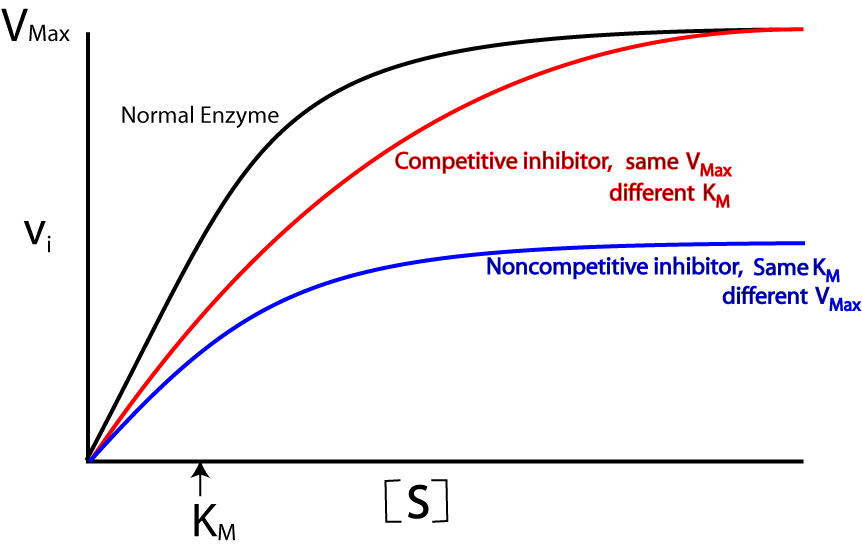Non-competitive inhibitor: Difference between revisions
Jump to navigation
Jump to search
mNo edit summary |
No edit summary |
||
| Line 7: | Line 7: | ||
*'''K<sub>m</sub> is unaltered''' as the affinity with which substrates bind to the enzyme stays the same. | *'''K<sub>m</sub> is unaltered''' as the affinity with which substrates bind to the enzyme stays the same. | ||
*'''V<sub>max</sub> decreases''' because rate of reaction decreases due to the fact that as the reaction progresses, the concentration/amount of effective enzymes decreases. | *'''V<sub>max</sub> decreases''' because rate of reaction decreases due to the fact that as the reaction progresses, the concentration/amount of effective enzymes decreases. | ||
[[Image:Enzyme inhibitors.gif|Michael-Menten Graph depicting effects of competitive and non-competitive enzyme inhibitors.]] | |||
Revision as of 19:03, 3 December 2016
A non-competitive inhibitor binds to an enzyme in another place other than its active site. This results in a change in the enzymes structure so that it is no longer complimentry to its substrate and therefore reduces its catalytic activity.
The effects of a non-competitive inhibitor can be depicted by changes in its Michaelis-Menten graph:
- Km is unaltered as the affinity with which substrates bind to the enzyme stays the same.
- Vmax decreases because rate of reaction decreases due to the fact that as the reaction progresses, the concentration/amount of effective enzymes decreases.
